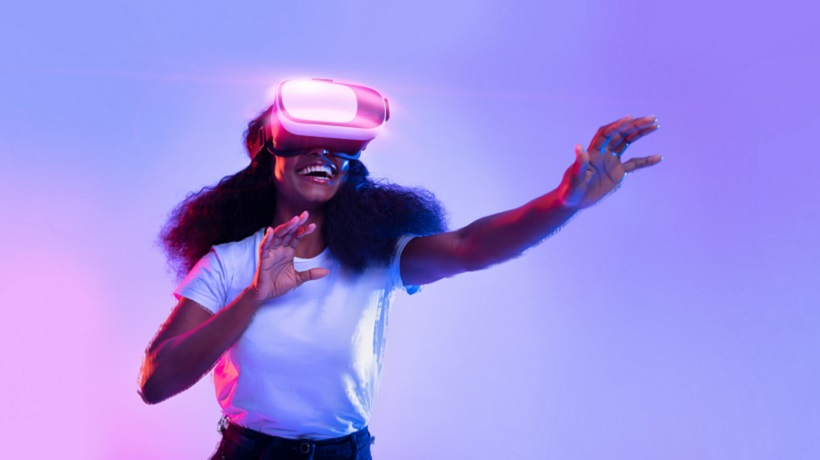Best Practices For Immersive Instructional Design
For the Instructional Designer (ID) tackling the brave new world of Virtual Reality (VR)/Augmented Reality (AR)/Extended Reality (XR) technologies, the fundamental principles of design continue to adhere, although today’s delivery mechanisms open up new realms of learner response and engagement. IDs and teachers have always looked to increase the engagement with, retention of, and transfer of our learning content, so that real and meaningful results can be measured from our learning design programs. Immersive technologies, whether hybrid or fully virtual, offer an array of possibilities to address those challenges, and the technology has already begun taking hold. Curated from academic and corporate sources, the following are nine immersive technology-design practices to execute on these new platforms, for the benefit of learners and all stakeholders.
9 Best Practices For Immersive Instructional Design
1. Identify The Technological Needs And Resources To Implement The Training
Make sure the equipment, connectivity, and software are all available and functional for the learners and the learning environment. Seems like common sense, but neglecting to confirm and troubleshoot the technological chain needed to implement even a straightforward solution will lead to unexpected problems that may be difficult to overcome.
Similarly, develop in a platform that is accessible and familiar to you (the developer); outsourcing is a significant investment industrywide, and you may be able to achieve the interactivity and objectives you need without hiring an external development team or company. At the very least, you can prototype on a smaller system first, to determine what elements may be better outsourced to a larger provider.
2. Prepare The Learners For The Training
Introducing learners to not only the content but unfamiliar interface technologies as well is a lot for people to leap into. So take seriously the need to roll out the program in stages, starting with an introductory stage. Identify key charismatic personnel to help champion, introduce, and demonstrate the training platform to establish a positive kickoff and atmosphere. This will motivate learners to embrace the learning experience and its potential, without being overwhelmed, intimidated, or de-motivated.
3. Make Sure The Learning Experience Stays Active, Not Passive
Immersive should go beyond the "ooh and ahh" stage to be effective learning design. The ways users can interact with the simulation or scenario should create an environment of active participation. Questions, instructions, and clickable, movable objects present a variety of avenues for this, but active observation is also key. The detail and relevance of the content, along with any dynamic, moving elements, will help learners get the most out of being in a VR/AR/Mixed Reality (MR) platform. VR developers like ELB, Roundtable, and others prioritize keeping the immersive experience as active as possible, whether or not there is a specific input and quiz answer at any given moment.
4. Identify Business Objectives And Map Them To Learning Objectives
The development of immersive experiences still adheres to Instructional Design principles, particularly the need to identify and focus on the training goals and the business goals [1]. Avoid getting sidetracked from these in favor of particular bells and whistles with a seemingly irresistible "cool factor." The line between game designers and Instructional Designers may be blurring, but they’re still playing in different domains. Keep it focused and keep your audience, learning theory, and business goals in mind throughout the process.
5. Lean Into Gamification
Adhering to training goals does not mean gamification isn’t a priority. It absolutely should be. Whether through leaderboards, badges, points, or other competitive elements, keep it gamified. Learner feedback research tells us gamification is a key factor in engagement for immersive training learning [2]. Manage gamification the way you would any other design feature: don’t let it be confusing or convoluted, keep it as simple and intuitive as possible using visual and audio cues rather than cognitive or text-based explanations, whenever possible.
6. Build A Curriculum, Script, And Production Plan
Depending on the type of immersive experience you’re developing, you may need actors, sets, props, shooting angles, and all the tools of a film set. But even if you are doing something completely digitally, you may need a film-style storyboard, to walk through each step of the learner’s experience path. If you are using live actors and real sets, then you will need a production plan and team that’s built for filmmaking, but one with experience in immersive learning filming in particular.
7. Prioritize Accessibility And Alternative Approaches For Learners With Special Needs, Or Other Delivery Constraints
Accessibility could mean more than closed captioning or font sizes. Also think about scaling down a version of the course for users without gear, for example. It could be that an organization doesn’t have the budget for hundreds of pairs of special goggles, and/or it isn’t practical for other reasons. In that case, a shared-screen option wherein you project images on a large screen and have the audience negotiate actions together might be an effective design choice for some end users.
For K-12 or other environments, a constructivist approach over a shared screen may sometimes be more appropriate than individual headsets [3]. This could also be the case for corporate environments. Internet connectivity is not available equally all over the world, so an offline self-contained solution is another topic worth considering.
8. Create Activities To Evaluate Comprehension And Skill Progress
The many wonderful interactive elements in your immersive world should not only challenge and reward the learner, but they should also continually gauge their progress toward the learning goals. Learners love and need to track their progress, and to see where they are in the big picture of where they are trying to get to. Knowledge checks should be present throughout the learning experience, covering microlearning objectives [4].
9. Evaluate The Effectiveness Of The Course Relative To Learning Objectives
The final stage of ADDIE is "evaluation", and this is a vital part of the immersive project as well. In addition to all the learner progress and targets we’re watching, we need to know where the weak links are in the immersive design, and how to approach further iterations to be more efficient in cost, design, and implementation. Knowledge is power, so we have the most to gain by gathering as much useful data and feedback on the program’s functionality and foibles as possible. Evaluation is everything.
Conclusion
Immersive learning experiences are becoming more and more prevalent with each passing year, so it’s important to understand and adhere to design best practices for the betterment of ourselves, our audiences, and ultimately our stakeholders.
References:
[1] A glimpse inside the role of instructional design for Immersive Learning
[2] Service Desk Onboarding Training Environment









